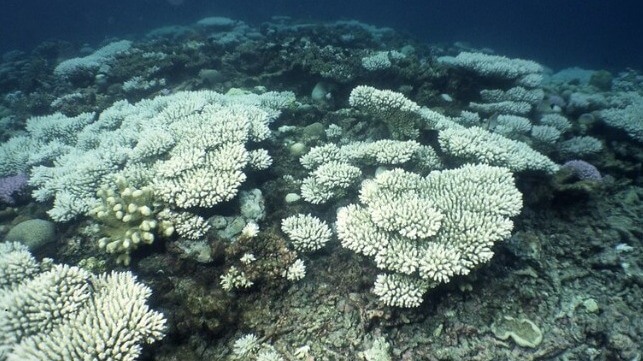WMO: Risk of Floods, Storms, Marine Heat Waves is Increasing

The wave of climate-related disasters facing the world are bound to escalate in severity and scope, the World Meteorological Organization (WMO) has warned - including flooding, sea level rise, marine heat waves, ocean acidification and hurricane risk.
WMO, in its State of the Global Climate report, shows that greenhouse gas (GHG) concentrations, sea level rise, ocean heat and ocean acidification set new alarming levels in 2021, yet another clear sign that human activities are causing planetary scale changes.
The impact of extreme weather, the day-to-day “face” of climate change, has resulted in hundreds of billions of dollars in economic losses, triggering shocks for food and water security and displacement that have accelerated in 2022.
“Our climate is changing before our eyes. The heat trapped by human-induced GHG will warm the planet for many generations to come. Sea level rise, ocean heat and acidification will continue for hundreds of years unless means to remove carbon from the atmosphere are invented,” said Prof Petteri Taalas, WMO Secretary-General.
The climate report shows that GHG concentrations reached a new global high in 2020 when the concentration of carbon dioxide (CO2) reached 413 parts per million (ppm) globally, or 149 percent of the pre-industrial level. In 2021 and early 2022, they continued to increase with monthly average CO2 at Mona Loa in Hawaii reaching 416 ppm in April 2020, 419 ppm in April 2021, and 420 ppm in April 2022.
The global annual mean temperature in 2021 was around 1.1?°C above the 1850-1900 pre-industrial average. The most recent seven years, 2015 to 2021, are the seven warmest years on record. The report also shows that ocean heat hit a record high with the upper 2000 meters of the ocean continuing to warm in 2021, a trend that is projected to continue in the future. During the year, much of the ocean experienced at least one ‘strong’ marine heatwave at some point.
On ocean acidification, the report reckons that open ocean surface pH is now the lowest it has been for at least 26,000 years and current rates of pH change are unprecedented. Oceans absorb around 23 percent of annual emissions of anthropogenic CO2 to the atmosphere. This reacts with seawater and leads to ocean acidification, which threatens organisms and ecosystem services, and hence food security, tourism and coastal protection. As the pH of the ocean decreases, its capacity to absorb CO2 from the atmosphere also declines.
Global mean sea level reached a new record high in 2021, after increasing at an average 4.5 mm per year over the period 2013 -2021. This is more than double the rate of between 1993 and 2002 and is mainly due to the accelerated loss of ice mass.
Climate-related flooding events have accelerated. In Henan province in China, for instance, flooding induced economic losses of $17.7 billion, while Western Europe experienced some of its most severe flooding on record in mid-July 2021, causing economic losses in Germany that exceeded $20 billion along with heavy loss of life. In the U.S., Hurricane Ida caused economic losses estimated at $75 billion.
Meanwhile, drought affected many parts of the world including the Horn of Africa, Canada, the western U.S., Iran, Afghanistan, Pakistan, Turkey among others, putting millions at the risk of food insecurity. “The compounded effects of conflict, extreme weather events and economic shocks, further exacerbated by the COVID-19 pandemic, have led to a rise in hunger, undermining decades of progress towards improving food security,” noted the report.
Bleached coral, Chagos, 2011 (Mark Spalding / World Resources Institute / CC BY NC SA 2.0)
